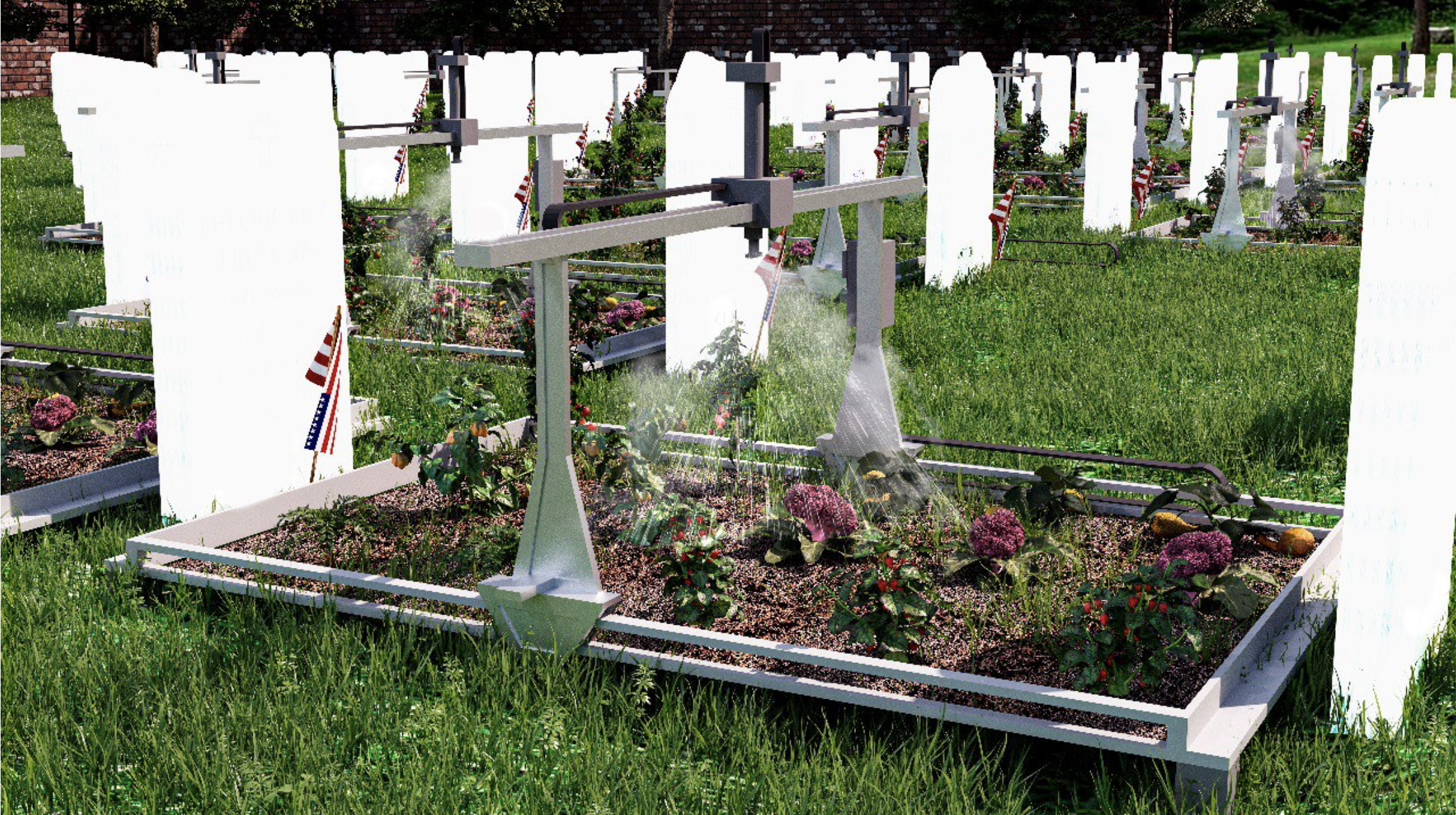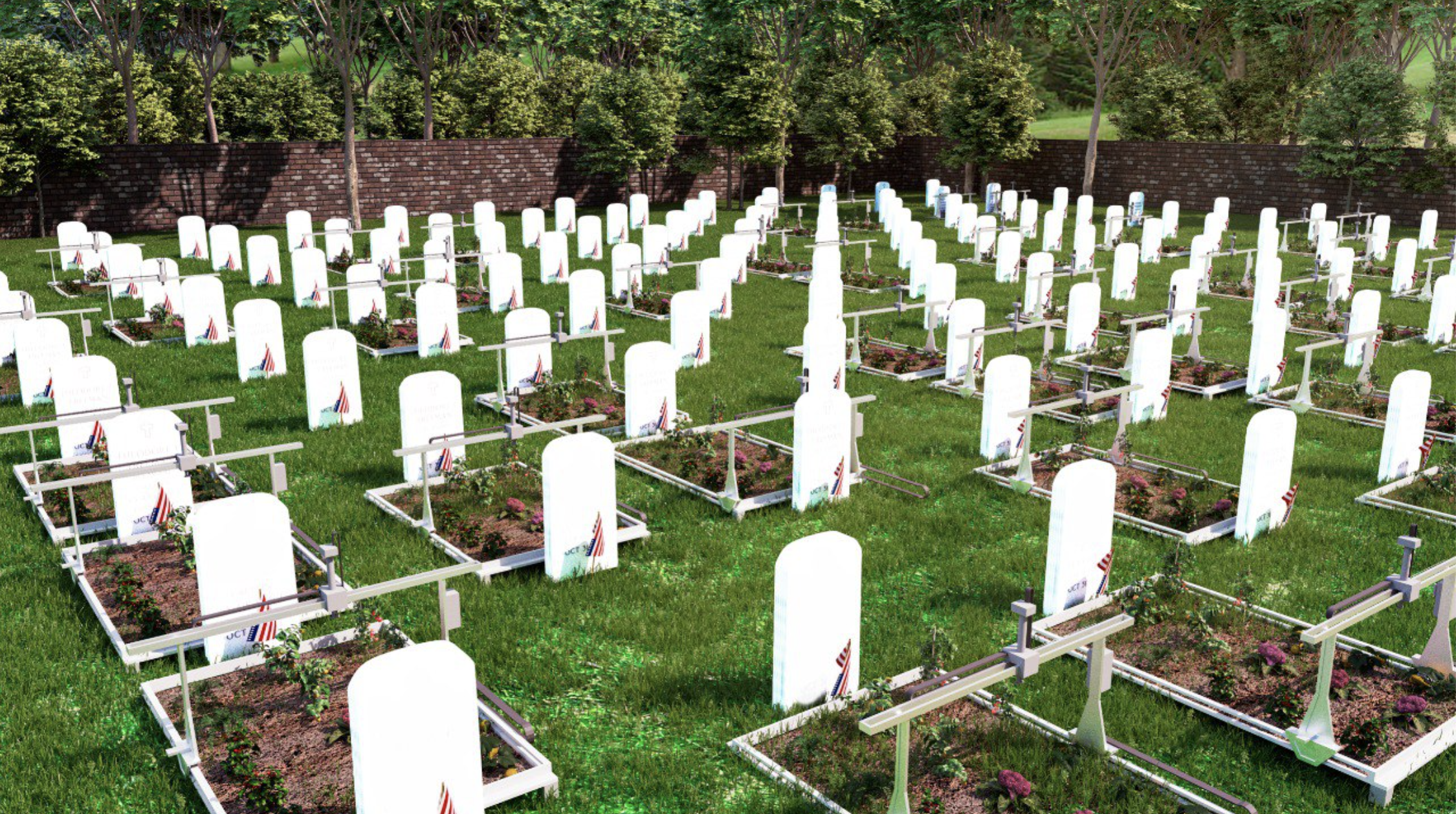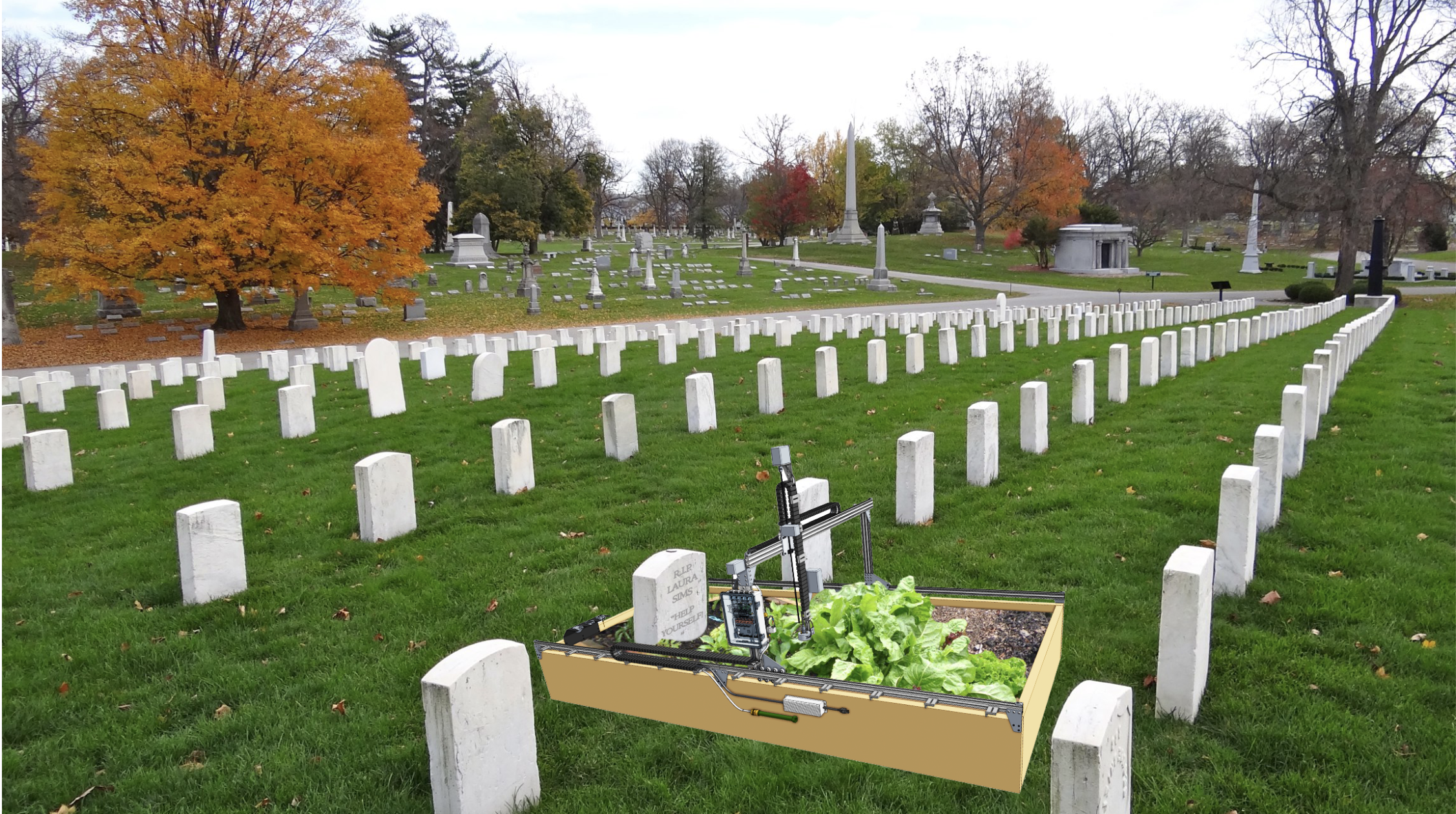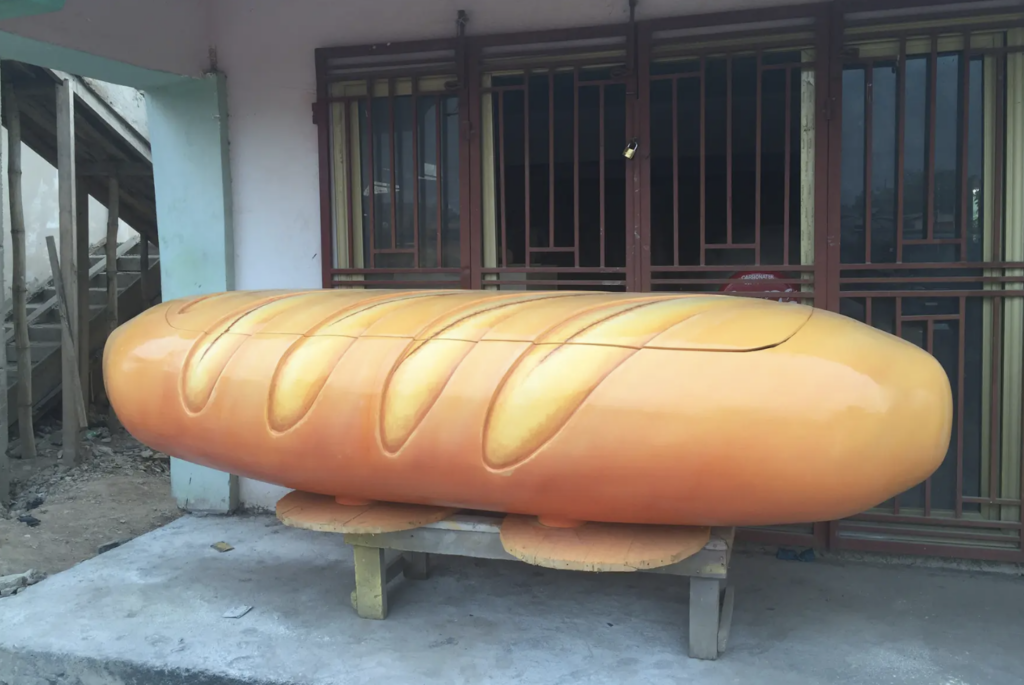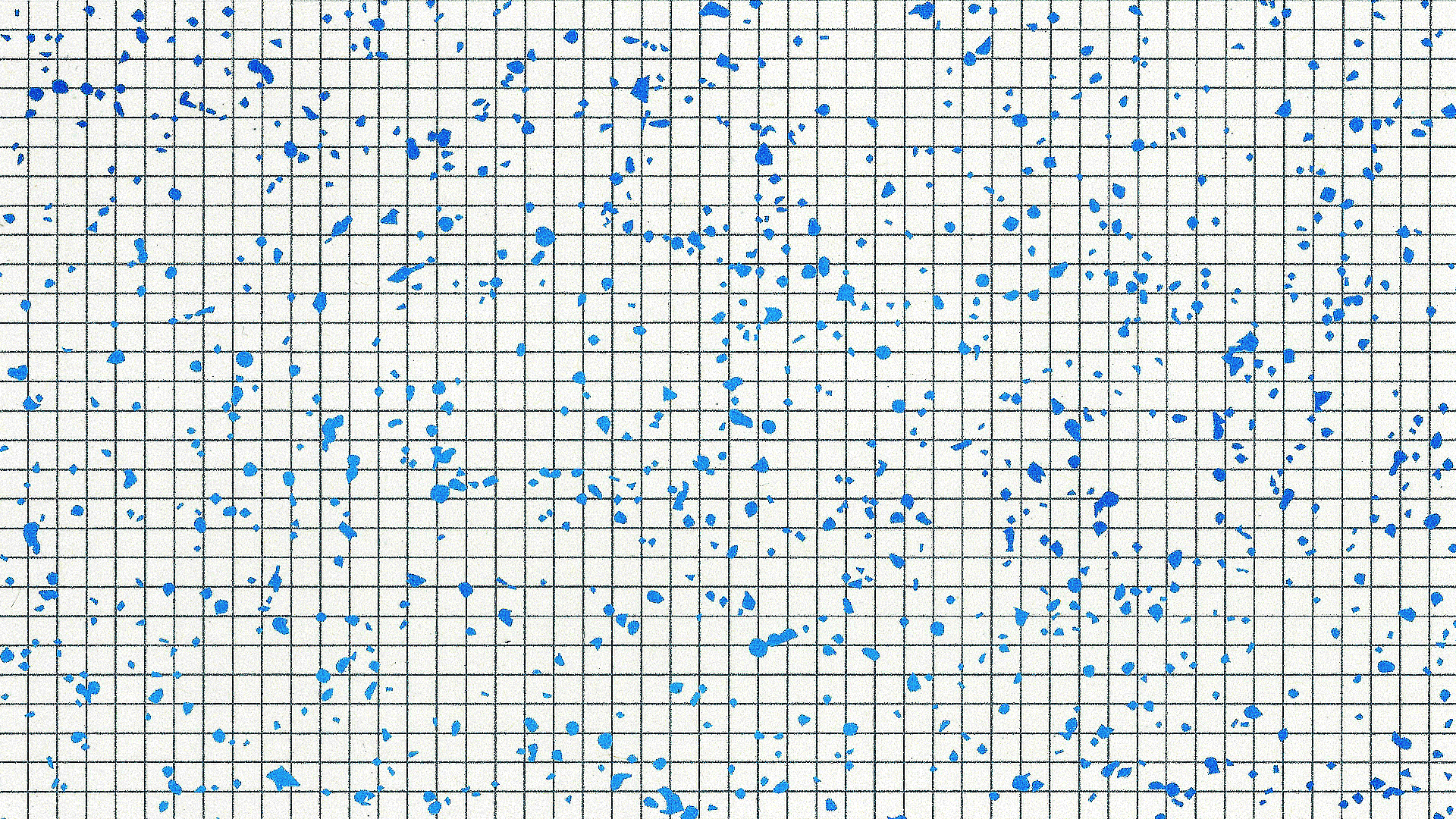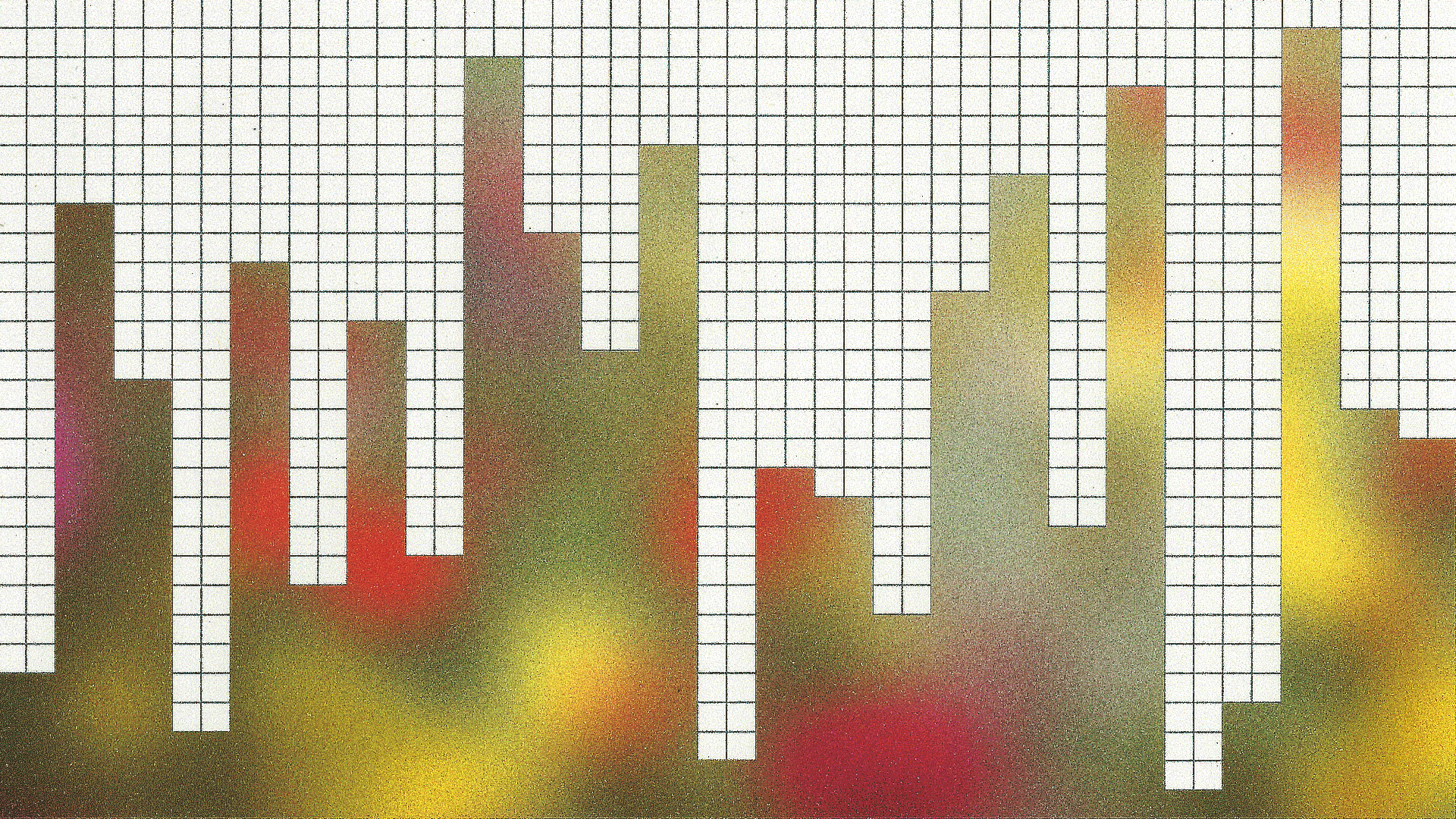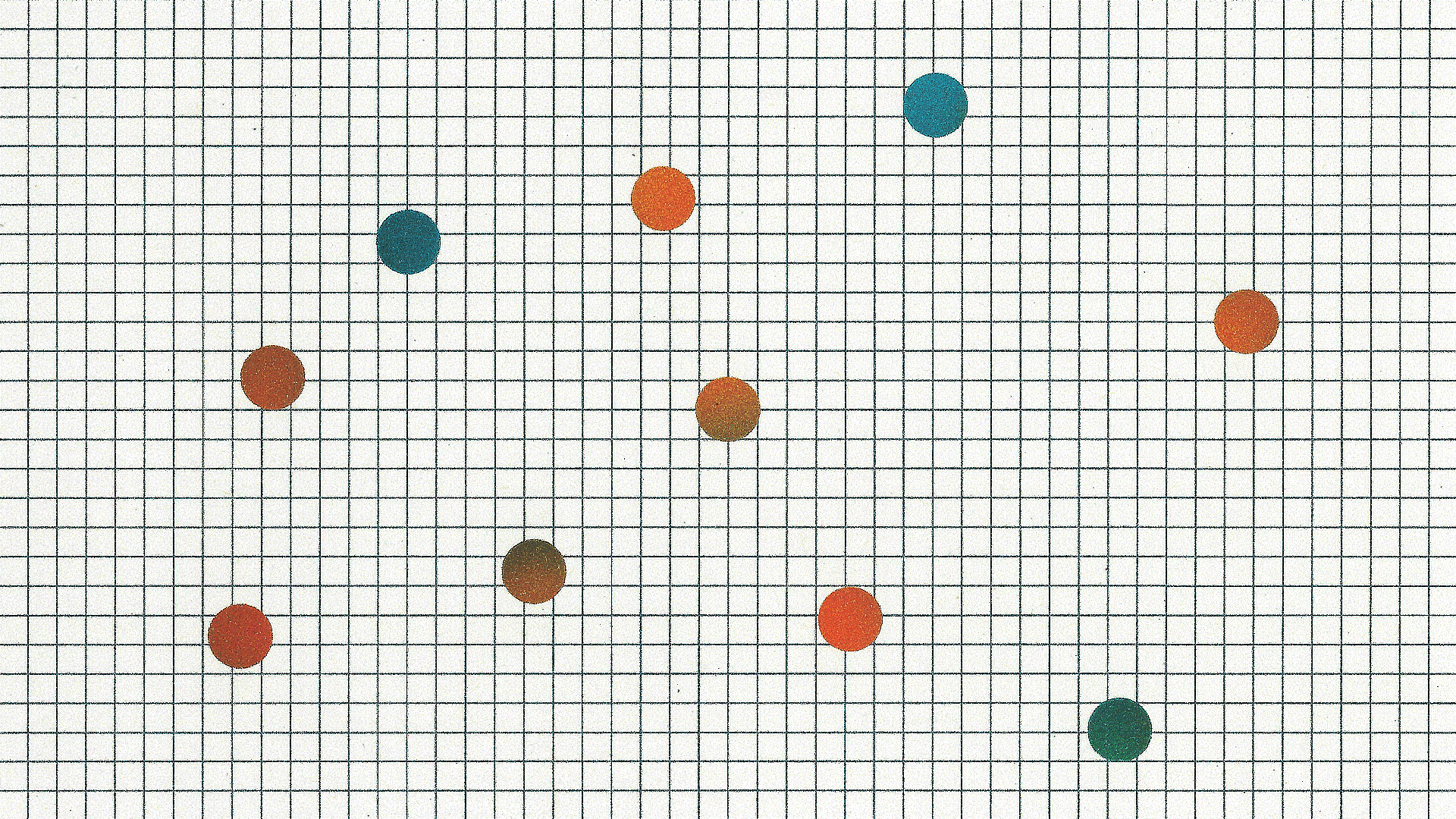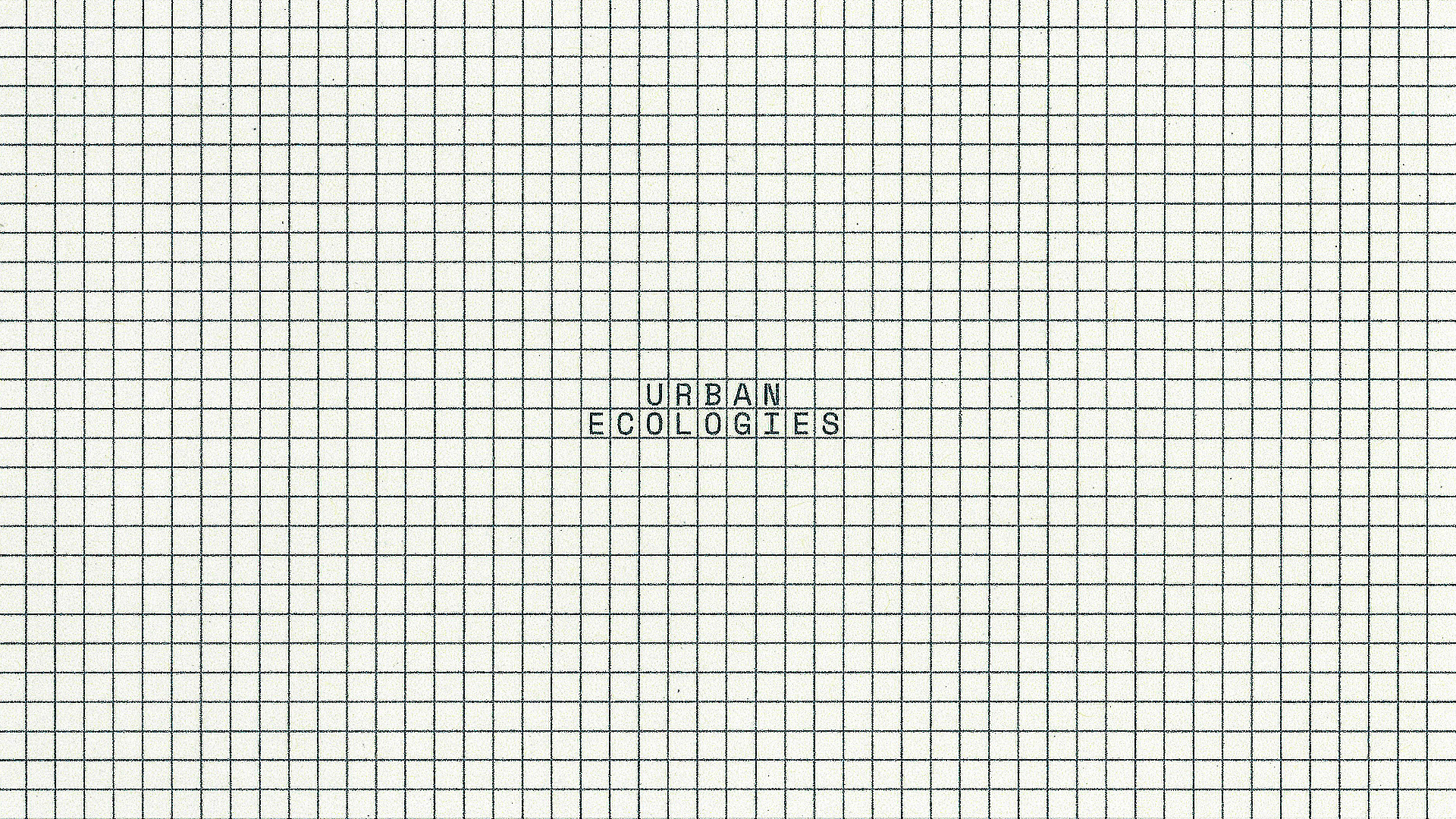This story is a part of MOLD’s reader-submitted project series. Submit your projects here for consideration.
For at least the last 10,000 years, civilization has connected death with rebirth and tried to find common ground between the departed and the living. While the symbolism of winter leading to spring and new life springing from old remains strong, today’s civilization has metamorphosed into urbanization, and access to agricultural land is increasingly rare. Some of the largest remaining green spaces in the urban environment are cemeteries, often located in areas with the least access to fresh produce.
All images and text provided by Katya Bloomberg
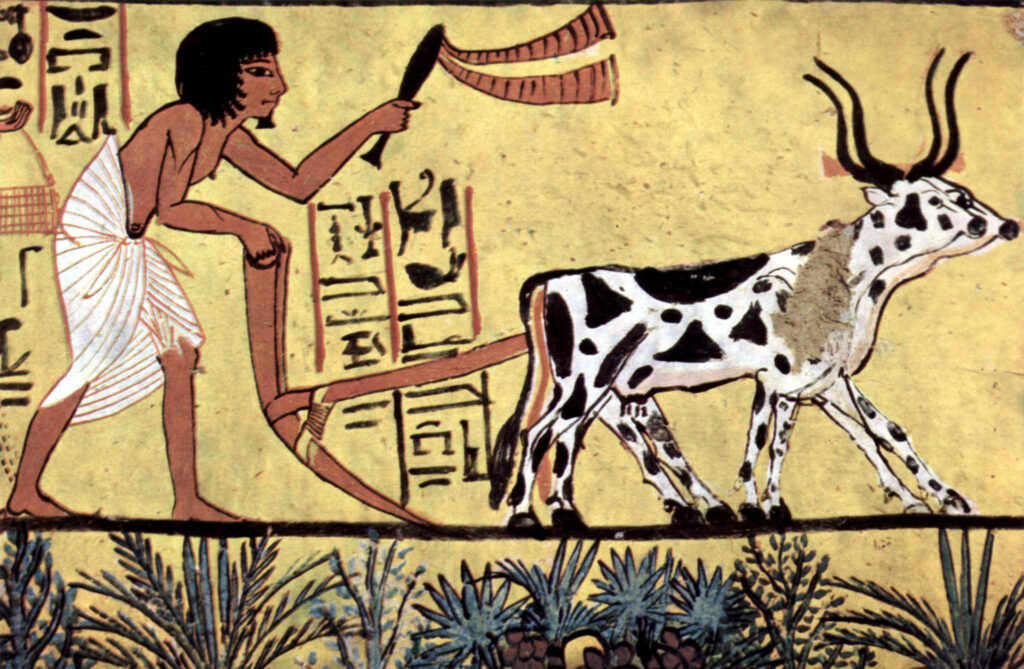
PROJECT OVERVIEW
Contemporary burial practices introduce harmful chemicals and non-compostable materials into the soil, produce high CO2 emissions, and reinforce an outmoded aesthetic fixated upon manicured lawns and sterility. Edible cemetery gardens would enliven the urban environment, promote green burial practices, and provide access to green space, fresh fruits and vegetables to those who need it most. A hybrid model for urban cemeteries to honour the departed by feeding the living.
PROBLEM
Urban community gardens are increasingly important hubs for invigorating economically-disadvantaged urban neighbourhoods, but they face severe difficulties finding space in which to grow. Some of the largest remaining green spaces in the urban environment are cemeteries, often located in these same neighbourhoods that are home to people with some of the least access to fresh produce. How can we design urban cemeteries to feed the living while continuing to honour the dead?
DESIGN PROCESS
We trace civilization’s historic views on life and death to find ancient connections between agriculture and death and even recent practices within the US and elsewhere that find food in cemeteries as a form of honouring the dead. A review of contemporary burial practices shows the ecological damage of today’s mainstream burial practices and finds hope in recent developments of green burials, human composting, and automated FarmBots.
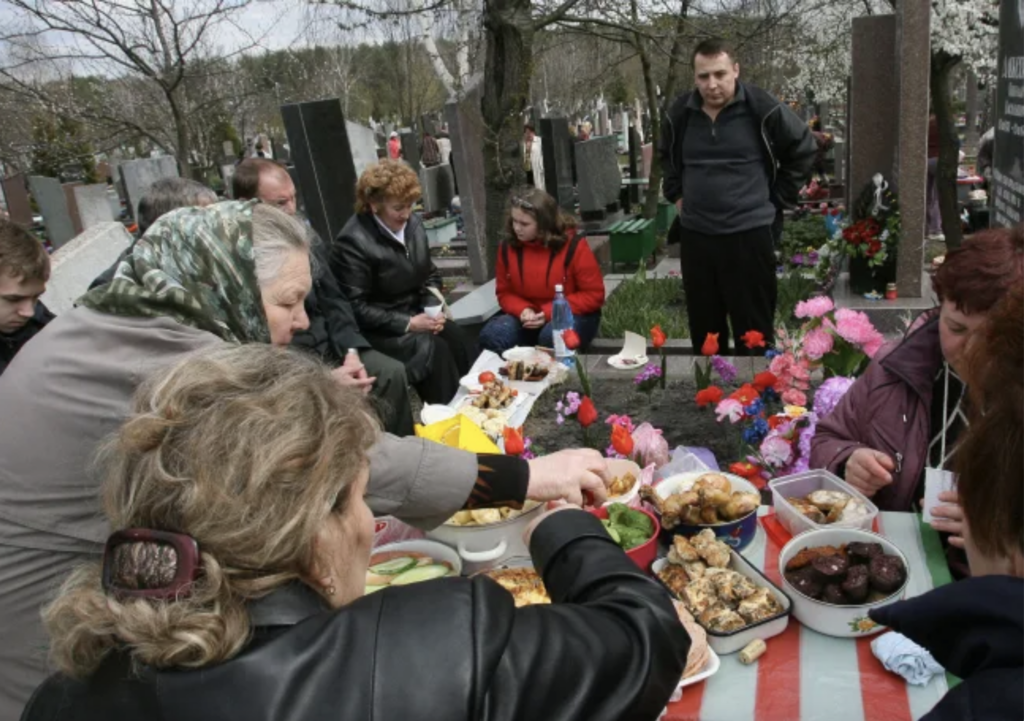
SHAPING THE FUTURE OF FOOD
Edible cemetery gardens would enliven the urban environment, promote green burial practices, and provide access to green space, fresh fruits and vegetables to those who need it most.
ABOUT THE PRACTICE
Katya Bloomberg is a Food Studies master’s degree candidate at NYU, studying Food Futures with Stefanie Bardin.
